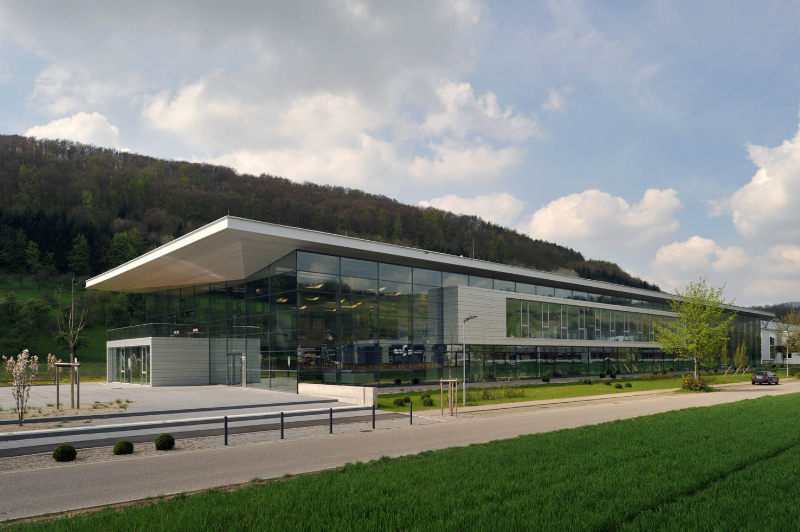Automation’s managing editor, Neil Mead recently paid a visit to one of Bürkert’s latest Systemhaus facilities situated in the beautiful setting of the Kocher Valley where he saw first hand the engineering expertise the company is able to offer its customers. Neil also spoke to Bürkert CEO, Heribert Rohrbeck about the company’s Systemhaus philosophy and how it intends to continue to grow and stay ahead of its competitors.
 In the 1990s Bürkert took the first successful steps in developing system solutions for customers. The starting point for customised solutions resulted from enquiries for more than just the components. To provide these customers with optimal support, a ‘valve shop’ was set up back then, where employees from R&D and production worked on the development and implementation of these solutions.
In the 1990s Bürkert took the first successful steps in developing system solutions for customers. The starting point for customised solutions resulted from enquiries for more than just the components. To provide these customers with optimal support, a ‘valve shop’ was set up back then, where employees from R&D and production worked on the development and implementation of these solutions.
Since Bürkert already offered all elements for a control loop at that time, customers were able to limit the number of their suppliers and contacts. And since all Bürkert components are designed for compatibility, communication was easy. Therefore, the success of the customized solutions grew continuously. The further development of this successful model was named ‘Systemhaus’. This term refers not only to the building itself, but to the entire process that takes place there. The idea is based on the first product offered by Bürkert: an incubator. The Systemhaus is an ‘incubator’ for the products manufactured in the factories.
The employees at the Bürkert sales offices in 35 countries send their inquiries to a virtual mailbox. These inquiries contain all relevant information concerning the customer’s requirements, including technical descriptions of the application, as well as preferred delivery dates and the customer’s price estimates. In some cases, sales receive support with customer consulting from the Systemhaus.
In the Systemhaus, experienced employees from different teams and processes work together. The goal is to reduce the time for responding to customer inquiries and to continuously improve the process of developing the technical concepts. The internal standard: Inquiries should be answered within 48 hours. To achieve this, the experts from the production process are involved in the development of the concept and the estimation of the costs from the very start, based on the complexity of the inquiry. If a concept meets the customer’s expectations and a development results in an order, all steps for development of the system solutions are carried out. The short distances to tool manufacturing and serial production at Bürkert are additional advantages in the creation of functional samples and prototypes. This is supported by the capability of manufacturing samples using a rapid prototyping printer within only one work day.
 The process is reinforced and augmented in Europe by the Systemhaus locations in Dresden, which specialises in electrical fluid systems as well as software and electronic development, and Dortmund, which specialises in control cabinet construction and welding technology. To implement the Systemhaus concept in other markets, Systemhaus locations were established at the end of 2006 in Charlotte (USA) and Suzhou (China), as well. This not only makes the ideas and experiences from the German and European market available, but also takes into account the special regional requirements (USA, Asia & Pacific). The market and industry requirements can be determined for the particular location in order to develop customised solutions. Close cooperation among the different Systemhaus locations has become a matter of fact at Bürkert. Experiences, concepts, ideas and solutions are exchanged and improved in cooperation.
The process is reinforced and augmented in Europe by the Systemhaus locations in Dresden, which specialises in electrical fluid systems as well as software and electronic development, and Dortmund, which specialises in control cabinet construction and welding technology. To implement the Systemhaus concept in other markets, Systemhaus locations were established at the end of 2006 in Charlotte (USA) and Suzhou (China), as well. This not only makes the ideas and experiences from the German and European market available, but also takes into account the special regional requirements (USA, Asia & Pacific). The market and industry requirements can be determined for the particular location in order to develop customised solutions. Close cooperation among the different Systemhaus locations has become a matter of fact at Bürkert. Experiences, concepts, ideas and solutions are exchanged and improved in cooperation.
Since many of the markets in which Bürkert wants to grow are changing quickly, continuous improvements in all corporate processes are necessary. This includes optimisation of the production process, additional training of the sales representatives and the development of innovative valves, modules and components in R&D. So that we have the right components to meet the requirements of customers in the future, we have to correctly recognise and understand customer expectations, which is only possible through active exchange with product development and constant contact to the experts in the sales teams.
Another essential factor that helps to actively recognise trends and to find new approaches for system solutions is the application knowledge of the employees from the management segment. Together, ideas are developed to create concepts that already meet customer requirements before they are even formulated.
Constant improvement of existing solutions enhances this method. In coordination with the customer, this can result in a ‘facelift’ of the product or a follow-up model. The entire process is accompanied by recommendations for maintenance and service.
The customer and his expectations – including those unspoken – are always at the focus of Bürkert’s attention.

